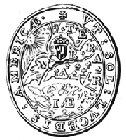|
|
|
|
|
WELCOME (continued)
reminded me of a book review I am late in submitting by a
scholar who spent her graduate career at Yale, took time
off to confront the real world as a auto mechanic, and
then got down to basics to write a very good book on the
influence of Small Pox on American history which she
called Pox Americana.
But I digress. The top of the google hit list for "beyond
the basics" was a site called : WWW: Beyond the Basics.
which is a draft book written by a class at Virginia Tech
about the World Wide Web . Just as I was getting
interested in what the class was about (I would recommend
you spend some time at the site), a little screen popped
up asking me who was the lead singer of Nirvana? How
many know? I was given choices, Shannon Noon, Kurt Cobain,
Jimi Hendrix, Ian Curtis, and Ed Papenfuse. I
suppose you all know the answer, Kurt Cobain, but I had to
go back to Google to find out. There, I found that my 87
year old father-in-law's heartthrob, Courtney Love, was
once Kurt Cobain's partner and that they had a child,
Frances Bean.
It is easy to get distracted on the web. It is almost as
bad as archivists on Listservs. But permit me to return to
today's theme: Beyond the Basics, and to welcome you to
Maryland on an auspicious day: Patriots Day, April 19. In
1775, on this day, the shot heard round the world was
fired. In 1861, on this day, the first blood of the Civil
War was shed on Baltimore's streets as the Massachusetts
troops tried unsuccessfully to move unscathed from
President's Street Station to Pratt Street Station on
their way to defend Washington. In 1995, tragedy struck
Oklahoma City. Subsequently, a memorial was built and web
site launched to keep the memories fresh of what happened
that day, but, interestingly enough, nothing on the web
site tells you succinctly about what happened, how it
happened, and when it happened.
|
|
|
|
|
|
|
|
|
|
Everything, of course, that we remember about the
importance of this day, is overshadowed by another day in
September, but the message is the same. As archivists we
are charged with keeping the the meaning of the collective
memory alive in world that is fast becoming almost too
fragile for us to handle. Instead of the tangible objects
of paper and even more esoteric artifacts like Jeremy
Bentham's skull that we are called upon to care for and
make known, if not accessible, we face extraordinary
challenges ahead with regard to holding on to our
knowledge of the past.
Last fall, I had the privilege of addressing a group of
archivists in the interior of China. The metaphor that I
used to conclude my remarks was drawn from a poem that
Chairman Mao copied in his unique style of calligraphy
and which is engraved on a stone monument at the
entrance to a dark alley in Nanjing named after the
Confucian scholars that once lived there: The poem is
about the swallows nesting in the eaves of the rich who
leave their safe and secure world to create their nests
in the eaves of the poor. The information revolution, as
manifested today in the World Wide Web, in many ways is
like the swallows spreading out into the countryside to
nest in the eaves of the citizenry at large.
More people than ever can learn about what we have in
our collections and what it all means, but, like the mud
and straw homes the swallows build, the electronic world
is fragile and easily destroyed. Still, as archivists we
must venture forth from the safe havens of the small and
tactile collections which largely form the basis of what
you care for to the larger, darker uncertain world of
finding and maintaining the principal source of what we
know about ourselves today, tomorrow, and in the future:
the electronic information sources of today, ignoring
the distractions, and focusing on the essentials,
building our little homes of clay and straw
(known
(continued on Page 3)
|
|
|
|
|









